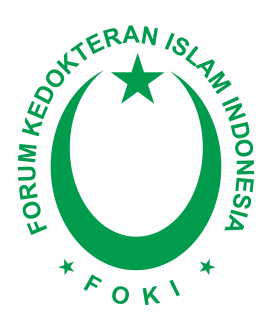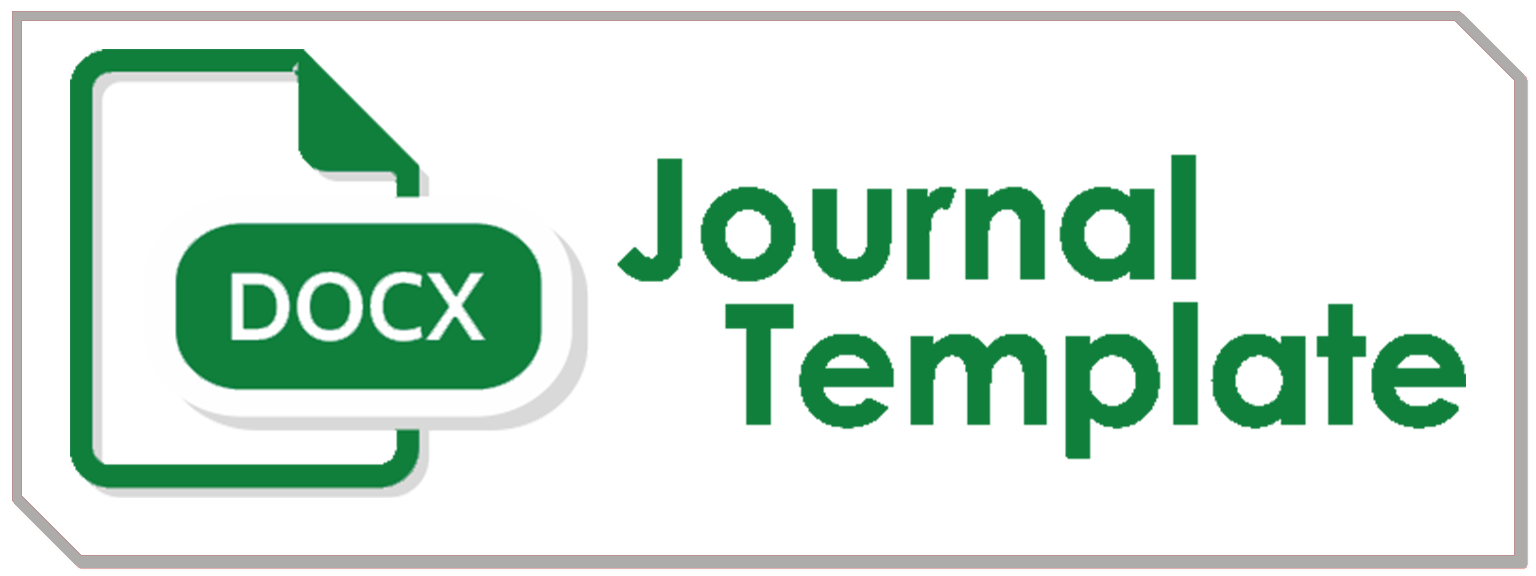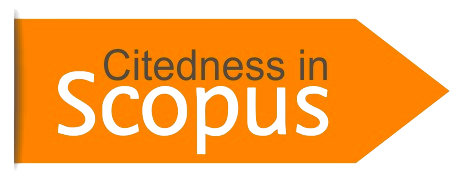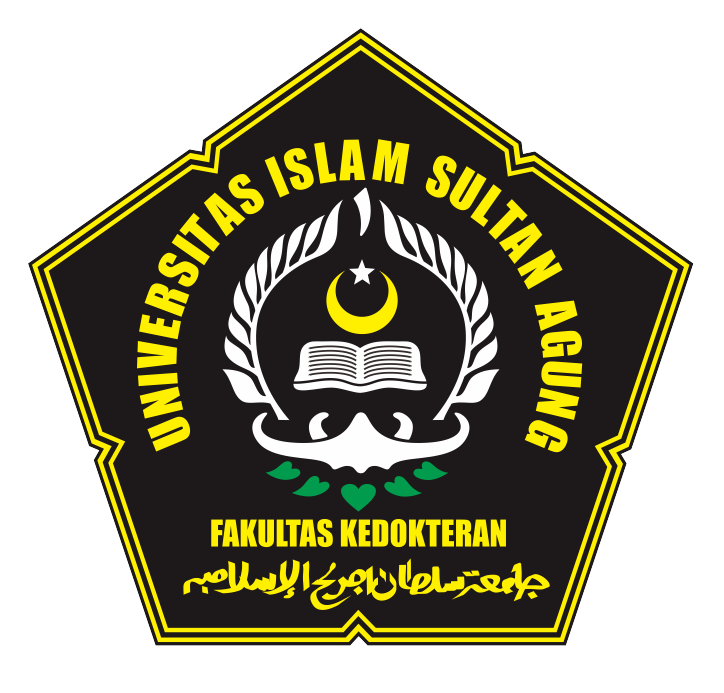class Author Guidelines
Author Guidelines
Sains Medika: Jurnal Kedokteran dan Kesehatan (SainsMed) is a peer-reviewed semiannual scientific publication journal that accepts original research articles, review articles and case reports related to the field of health, basic medical research, clinical research, applied medical science, and public health research.
Research Articles
Research articles are original research articles in basic and applied medical sciences as well as in health. The format of a research article consists of title page, abstract (English), introduction, materials and methods, results, discussion, and references.
Review articles
Review papers should be critical analysis and integration of recent advances in an important area of research which can stimulate further research, provide a new approach or new knowledge. Authors of these papers should have published at least 3 articles on the subject in a referred journal or should be recognized authorities in the field covered by the review. The review article format consists of title, abstract, introduction, main body, and references. For your information, SainsMed only publishes review articles only 2 times a year and with rare case report.
Case Report
Case reports are articles on cases in the field of medical and health sciences that are considered to be important and needs to be disseminated. The case report format consists of title, abstract, introduction, case, discussion, and references. For your information, SainsMed only publishes case reports only 2 times a year and with rare case report.
GUIDING PRINCIPLES
An acceptable manuscript will meet the following general criteria: it reports a worthwhile contribution to health science, methodology is well and clearly explained with sufficient details. Results and discussion are supported by sufficient scope data, manuscripts is concise, well written, and understandable. Conclusion summarized the results and showed specific findings.
INSTRUCTIONS FOR MANUSCRIPT SUBMISSION
Starting from 2017, all manuscripts to SainsMed should be in English. Authors are required to register before submitting their manuscript. For further information regarding the submission process, please send contact our secretariat at sainsmedika@unissula.ac.id.
General Instructions
To avoid duplication, SainsMed does not accept articles that have been published or are being submitted to other journals, which should be proven by signing a statement that the manuscript is not being submitted or processed in another journal. The author should ensure that all other authors have agreed to publish in SainsMed. If an article that has been published in SainsMed is known to be published in another journal, SainsMed will announce its retraction in the next issue of the journal. All articles will be discussed by experts from appropriate fields (peer review) and also by the editorial board. Articles that need improvement are returned to the author. Research articles must obtain the approval from an ethics committee or consider the ethical aspects of the research that can be accounted for.
Article Writing
Manuscript to be submitted should be a typewritten manuscript using Calisto MT 10 font on A4 paper 1.5-spaced throughout with 2.54 cm margins at the left, the top, the right and the bottom. Your manuscript should not comprise more than 20 pages. The total number of words in Introduction, Methods, Results, and Discussion should not be more than 3,500 words. All page should be numbered sequentially starting from the title page to the last page. Articles will be published in US English.
MANUSCRIPT TITLE
Title clearly describes the manuscript content, concise, informative and preferably not more than 20 words. The title should avoid abbreviations and formula.
AUTHORS
Manuscript has main author and co-authors with full name of both author and co-authors (no abbreviation). The author should indicate the affiliation institute with clear address. The name and correspondence address, phone number, facsimile number, and e-mail addres.
ABSTRACT
The abstract comes after title and author names in the first page of manuscript. Abstract must be integrated and independent which is consisted of introduction and purpose, methods, results, conclusion and suggestion. References and non-standard or uncommon abbreviations should be avoided. Abstract contained not more than 250 words.
KEYWORDS
Provide a maximum of six keywords using British spelling and avoiding general and plural terms and multiple concepts (avoid 'and', 'of', etc.). Use abbreviations sparingly; only those that are well-established in the discipline may be acceptable. These terms will be used for indexing.
INTRODUCTION
State the work's objectives and provide adequate background, avoiding a detailed literature review or summary of the results. In the introduction, the justification for the study and its relevance to medical and health must be explicitly articulated. It is insufficient to state that the study was conducted because it had never been done previously.
MATERIALS AND METHODS
Provide sufficient information for an independent researcher to reproduce the work. Describe the subject/object/materials used in the study, methods for preparing the materials,research protoco, sampling method, place and time of study, measurement criteria, and statistical method. Specify the computer software used.
Methods that have already been published must be summarised and referenced. Use quotation marks and cite the source when quoting verbatim from a previously published method. Describe any modifications made to existing methods. Studies involving animals or humans must provide documentation of applicable research ethics.
All measurements should be expressed in SI units. Test chemicals and enzymes must be distinctly designated using IUPAC and CAS names, and if possible, CAS Registry and EC numbers. It is appropriate to refer to pesticides by their ISO names and human and veterinary medications by their INNs.
RESULTS
Results presented should be consistent with the objectives of the study. Results correlates with the purpose of the study (research question/s). Tables/figures in the results are important and relevant with the results. Text does not repeat the results in the tables/figures. Text provides clarifying information for the results in the tables/figures and placed before the tables/figures.
DISCUSSION
Interpret your results in light of what was already known about the subject of the investigation, and to explain our new understanding of the problem after considering your results. Fundamental questions to answer in Discussion section. The discussion explains the significance of the study's results, does not repeat the results, and addresses how the reported results can be used to solve problems, distinctions and similarities with previous studies, and the possibility of future research. This section must include the research's strenghts and weaknesses. Avoid lengthy citations and discussions of published works.
CONCLUSION
The conclusion should be described in detail. Conclusion fits the objective of the study. Write a conclusion that addresses the problem formulation (research question) posed at the conclusion of the introduction. Conclusion does not include completely new ideas. The conclusions must be based on the previously described results and discussion. You can provide suggestions or contributions for future research.
The conclusion is the key result, the most important outcome of your work. Do not simply summarize the points already made in the body — instead, interpret your findings at a higher level of abstraction. Make the Conclusion interesting and memorable for readers.
ACKNOWLEDGEMENT
Mention here the source(s) of funds and institutions or those who assisted with the research (e.g., by providing language assistance, writing assistance, or proofreading the article, etc.).
Examples: This research was funded by ………… .. (write down the sponsor or funding source if any).
REFERENCES
Articles should include at least 20 primary research papers, comprise 80% journal articles, and have been published no more than 10 years ago. All references should be recorded in Mendeley using the American Psychological Association (APA) 7 th edition format.
Citation in text
Please ensure that all references cited in the text appear in the reference list and vice versa. All references cited in the abstract must be provided in their entirety. Unpublished results and personal communications should not be included in the list of references, but they may be mentioned in the text. If these references are included in the reference list, they must adhere to the journal's standard reference format and replace the publication date with either "Unpublished results" or "Personal communication." A reference that is cited as "in press" implies that the work has been accepted for publication. Any references cited in the abstract must be given in full. Unpublished results and personal communications are not recommended in the reference list, but may be mentioned in the text. If these references are included in the reference list, they should follow the standard reference style of the journal and should include a substitution of the publication date with either 'Unpublished results' or 'Personal communication'. Citation of a reference as 'in press' implies that the item has been accepted for publication.
All citations in the text should refer to:
- Single author: the author's name (without initials, unless there is ambiguity) and the year of publication;
- Two authors: both authors' names and the year of publication;
- Three or more authors: first author's name followed by 'et al.' and the year of publication.
Citations may be made directly (or parenthetically). Groups of references can be listed either first alphabetically, then chronologically, or vice versa.
Examples: 'as demonstrated (Suparmi et al., 2020a, 2020b, 2021; Suparmi and Prasetya, 2012)…. Or, as demonstrated (Suparmi, 2020; Isradji et al., 2022)… Suparmi et al. (2021) have recently shown …'
Reference formatting
List: References should be arranged first alphabetically and then further sorted chronologically if necessary. More than one reference from the same author(s) in the same year must be identified by the letters 'a', 'b', 'c', etc., placed after the year of publication. Use of the DOI is highly encouraged.
Examples:
Reference to a journal publication:
Suparmi, S., Wesseling, S. and Rietjens, I.M.C.M. (2020). Monocrotaline-induced liver toxicity in rat predicted by a combined in vitro physiologically based kinetic modeling approach. Archives of Toxicology, 94: 3281–3295. https://doi.org/10.1007/s00204-020-02798-z
Reference to a book:
George, D. & Mallery, M. (2010). SPSS for Windows Step by Step, A Simple Guide and References, Boston: Pearson.
Reference to a Chapter in an Edited Book:
Whiteside, T.L and Heberman RB. (2003). Effectors of immunity and rationale for immunotherapy. In: Kufe, D.W., Pollock, R.E., Weichselbaum, R.R, Bast, R.C.Jr., Gansler, T.S., editors. Holland-Frei Cancer Medicine. 6th edition. Hamilton (ON): BC Decker. Cancer medicine 6. Hamilton (ON): BC Decker Inc
Reference to a website:
BPS. (2019). Indikator-kesehatan-1995-2019. https://www.bps.go.id/statictable/2009/03/10/1559/indikator-kesehatan-1995-2021.html. Accessed 26 June 2018.
Reference in Proceeding:
Hamid, Z., Omar, A.N., and Chyang, P.J. (2022). Meta-Analysis: The Association of Airborne Fungi with Children’s Health Level. In Yafi, E., Ibrahim, N., Carreon, J.R., Barkhuizen, J. et al., (Eds.), Proceeding of the 3rdInternational Conference Health, Science And Technology (ICOHETECH). (pp. 41-46). Surakarta, ID: LPPM Universitas Duta Bangsa Surakarta
Reference to a bachelor thesis, master thesis or dissertation:
Suparmi. (2020). Risk and Benefit Analysis of Herbal Products from Indonesia. Disertation. Belanda: Wageningen University and Research.
Reference to a patent:
Suparmi, S., Prasetya, H., Martanto, M., Sunaryanto, L.T. (2019). Drop vitamin A dari karotenoid kulit pisang. IDP000063742/2019.
Figures
Please place the figures in the single file next to the relevant text in the manuscript, rather than at the bottom or top of the file. Minimum resolution for all figures in the following [color in RGB (red, green, blue mode) or grayscale] at least 300 dpi (dots per inch). The recommended resolution for line art (charts or images that contain typographic elements) is 600 dpi. For x-ray films, scans, and other diagnostic images, as well as pictures of pathology specimens or photomicrographs, black-and-white or color photographic prints, is 5 × 7 inches (127 × 178 mm). The caption should be inserted immediately beneath the figure. The title of figures placed after the remarks with single space. Ensure that each figure has a caption. A caption should comprise a brief title (not on the figure itself) and a description of the illustration. Keep text in the illustrations themselves to a minimum but explain all symbols and abbreviations used.
Tables
Please submit tables as editable text and not as images. Tables can be placed either next to the relevant text in the article, or on separate page(s) at the end. Number tables consecutively in accordance with their appearance in the text and place any table notes below the table body. Be sparing in the use of tables and ensure that the data presented in them do not duplicate results described elsewhere in the article. Please avoid using vertical rules and shading in table cells. Abbreviations used in the table must be defined in a footnote to the table. Indicate footnotes in this order of **, #.
assignment Copyright Notice
Journal Author(s) Rights
To publish and disseminate research articles, Sains Medika: Jurnal Kedokteran dan Kesehatan requires non-exclusive publishing rights (transferred from author(s) to publisher). This is determined by a publishing agreement between the Author(s) and Sains Med. J. Kedokt. dan Kesehat. This agreement governs with the transfer or license of the copyright of publishing to Sains Med. J. Kedokt. dan Kesehat, while Authors still retain significant rights to use and share their own published articles. Sains Med. J. Kedokt. dan Kesehat supports the need for authors to share, disseminate and maximize the impact of their research and these rights, in any databases.
As a journal Author, you have rights for a wide variety of uses of your article, including use by your institution or company of employment. These Author rights can be exercised without the need to obtain specific permission. Authors publishing in Sains Med. J. Kedokt. dan Kesehat have wide rights to use their works for teaching and scholarly purposes without needing to seek permission, including:
- Use for classroom teaching by Author or Author's institution and presentation at a meeting or conference and distributing copies to attendees;
- Use for internal training by author's company;
- Distribution to colleagues for their research use;
- Use in a subsequent compilation of the author's works;
- Inclusion in a thesis or dissertation;
- Reuse of portions or extracts from the article in other works (with full acknowledgement of final article);
- Preparation of derivative works (other than commercial purposes) (with full acknowledgement of final article);
- Voluntary posting on open web sites operated by author or author's institution for scholarly purposes,
(but it should follow the open access license of Creative Common CC-BY-by-SA License).
Authors/Readers/Third Parties can copy and redistribute the material in any medium or format, as well as remix, transform, and build upon the material for any purpose, including commercial purposes, but they must give appropriate credit (the name of the creator and attribution parties (authors detail information), a copyright notice, an open access license notice, a disclaimer notice, and a link to the material), provide a link to the license, and indicate if changes were made (Publisher indicates the modification of the material (if any) and retain an indication of previous modifications using a CrossMark Policy and information about Erratum-Corrigendum notification).
Authors/Readers/Third Parties can read, print and download, redistribute or republish the article (e.g. display in a repository), translate the article, download for text and data mining purposes, reuse portions or extracts from the article in other works, sell or re-use for commercial purposes, remix, transform, or build upon the material, they must distribute their contributions under the same license as the original Creative Commons Attribution (CC BY).
Copyright Transfer Agreement for Publishing (Publishing Right)
The Authors submitting a manuscript do so on the understanding that if accepted for publication, the non-exclusive right for publishing (publishing right) of the article shall be assigned/transferred to the Publisher of Sains Medika: Jurnal Kedokteran dan Kesehatan and Faculty of Medicine Universitas Islam Sultan Agung (FK UNISSULA).
Upon acceptance of an article, authors will be required to complete a 'Copyright Transfer Agreement for Publishing (CTAP)'. An e-mail will be sent to the Corresponding Author confirming receipt of the manuscript together with a 'Copyright Transfer Agreement for Publishing' form by online version of this agreement.
Sains Medika: Jurnal Kedokteran dan Kesehatan and Faculty of Medicine Universitas Islam Sultan Agung (FK UNISSULA), the Editors and the Advisory International Editorial Board make every effort to ensure that incorrect or misleading data, opinions or statements be published in the journal. In any way, the contents of the articles and advertisements published in the Sains Medika: Jurnal Kedokteran dan Kesehatan are sole and exclusive responsibility of their respective authors and advertisers.
Remember, even though we ask for a transfer of copyright for publishing (CTAP), our journal Author(s) retain (or are granted back) significant scholarly rights as mentioned before.
The Copyright Transfer Agreement for Publishing (CTAP) Form can be downloaded here: [Copyright Transfer Agreement for Publishing (CTAP) Form Sains Medika 2022]
The copyright form must be electronically signed and emailed to the Editorial Office in the original form below:
Dr. Suparmi, S.Si, M.Si (ERT) (Editor-in-Chief)
Editorial Office of Sains Medika: Jurnal Kedokteran dan Kesehatan
Gedung Dekanat Lantai 1 Fakultas Kedokteran Universitas Islam Sultan Agung
Jl. Raya Kaligawe KM 4 Semarang 50112, Central Java, Indonesia
Telp/Whatsapp: +62 812-2993-3369
E-mail: sainsmedika@unissula.ac.id
(This policy statements has been updated 19 October 2022)
What is Crossmark?
CrossMark, a multi-publisher initiative from CrossRef, provides a standard way for readers to locate the authoritative version of a document. Sains Medika: Jurnal Kedokteran dan Kesehatan acknowledges the significance of the integrity and completeness of the scholarly record to scholars and librarians, and places the utmost importance on preserving the credibility of its electronic archive. Clicking on the CrossMark icon will inform the reader of a document's current status and may provide additional publication record information.







